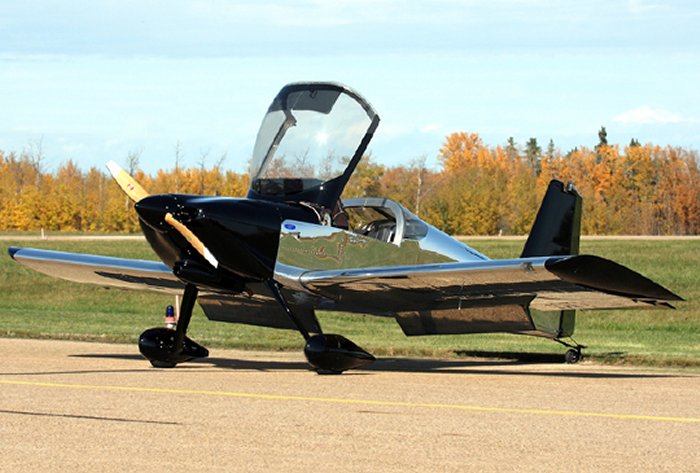This is the larger, 4 seat version of the Sling on a 'round the world trip:

Moderator: drseti

Not true.jake wrote:
My point with the cessna 150s was that when you see one flying with two people it is over gross weight unless they weight 100 lbs each and have half fuel.
I strongly disagree with the above sentiment.Same as a modern day LSA. Nothing new. There are thousand of them out there flying and they arent falling out out of the sky. Dont worry about it.
There are several factors at play here.FastEddieB wrote:It's a slippery slope. We can stipulate that a Light Sport will probably not suffer structural failure and/or be able to climb if its flown at 1,321 lbs. Or 1,322 lbs. Or possibly even 1,400 lbs. Or more. But that's a potentially deadly game to play, each pilot deciding that he or she is qualified to set limits higher than the engineers who designed the plane saw fit to establish.
You're certainly right that C150 had to meet w&b on the checkride, but the other point that they may seldom have met it otherwise is well taken based on my observations (I did not say personal involvement) in C150 training, some of which involved cross country and night when fuel requirements were higher.
We're grownups here (for the most part), and should seriously consider the effects of the advice we give here - most pilots who flaunt weight limits and crash probably filed away similar advice and acted upon it successfully...until they didn't.
FastEddieB wrote:...Just remember that virtually every pilot who crashed due to being over gross almost certainly had done it before to no ill effect, and possibly boasted about it, until that fateful day....
As an educator, how could I possibly disagree? But, that education has to include the true risks. Those have little to do with structural failure, and everything to do with stall speed.jnmeade wrote:The educated practitioner can assign risk and act accordingly.
Question Paul: In your scenario, a 20% overload corresponds with a 5kt stall speed increase. An EAB Sling built to 700kg (rather than an LSA at 600kg) is 16% heavier but the factory specs page lists only a 1kt increase in stall speed either clean or full flaps. Do you believe the data sheet is incorrect or misleading? http://www.airplanefactory.co.za/sling2.aspdrseti wrote:As an educator, how could I possibly disagree? But, that education has to include the true risks. Those have little to do with structural failure, and everything to do with stall speed.jnmeade wrote:The educated practitioner can assign risk and act accordingly.
I read a lot of NTSB accident reports, and have noticed that a disproportionate number of stall/spin accidents mention aircraft over gross. So, consider this scenario: Pilot has a tailwind on base, overshoots the turn to final, steepens the bank in the turn, adds power (i.e., torque), and then gives rudder to further yaw the nose without having to bank still further. Let's say this is in an LSA with 45 knot stall speed. 20% overgross (not hard to do in an LSA) raises stall speed to 50 knots. A 60 degree bank, if you haul back on the stick and pull 2 Gs, can further increase stall speed to 70 knots. And, if you were approaching at normal speeds, you just entered the classic stall/spin domain.
Was the cause of the accident being overgross? I doubt that would be the NTSB's judgment. Proximate cause was that tight turn to final. But, had the plane not been overgross, might the accident have been prevented? That is at least arguable.
So, will the plane "handle it" at higher weights? Of course it will - unless the pilot screws up. Why paint yourself into that corner in the first place?
Well, let's do the math. Stall speed varies with the square root of load factor. (700 kg / 600 kg) equals a load factor of 1.167. The square root of that is 1.080, or an 8% increase in stall speed. That means a 45 knot stall speed now increases 8%, to 48.6 knots ( a 3.8 knot increase).cogito wrote:Do you believe the data sheet is incorrect or misleading?
Unpainted planes, like the one pictured are usually polished to get the shine and smooth the surface to reduce corrosion.cogito wrote:Stupid idea I'm sure, but have any of you left your airplane unpainted? Might save 8 or 10 lbs and with all the polishing you'd make sure to never gain too much weight yourself.
Ron,rsteele wrote:Unpainted planes, like the one pictured are usually polished to get the shine and smooth the surface to reduce corrosion.cogito wrote:Stupid idea I'm sure, but have any of you left your airplane unpainted? Might save 8 or 10 lbs and with all the polishing you'd make sure to never gain too much weight yourself.
Polishing works, or not depending on the alloy used to build the plane. I'm building a Zenth which uses 6061-T6 aluminum. This aluminum is very corrosion resistant and there are quite a few polished Zeniths around. Polishing is said to save about 20lb on the Zenth 601, and I'll be polishing mine. On the other hand Vans are build of all-clad 2024 aluminum. I've never seen a polished Vans as the metal is prone to corrosion, or at least surface blemishes. You would have to put clear coat over polish. I was out at my hangar last weekend and cleaned off bird poop that had been there on the unpolished/unpainted surface for some time. It came right off with no indication it was ever there. Compare that to a friend's RV-7. Before it was painted, a drop of sweat would leave a mark.
Ron
